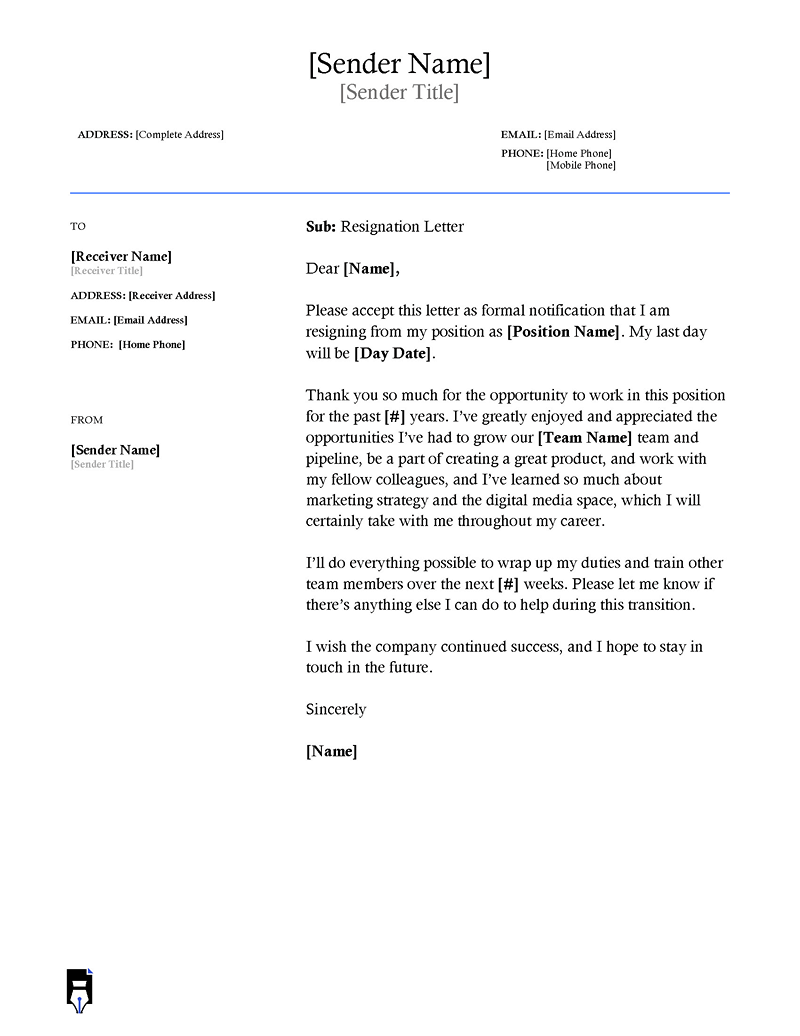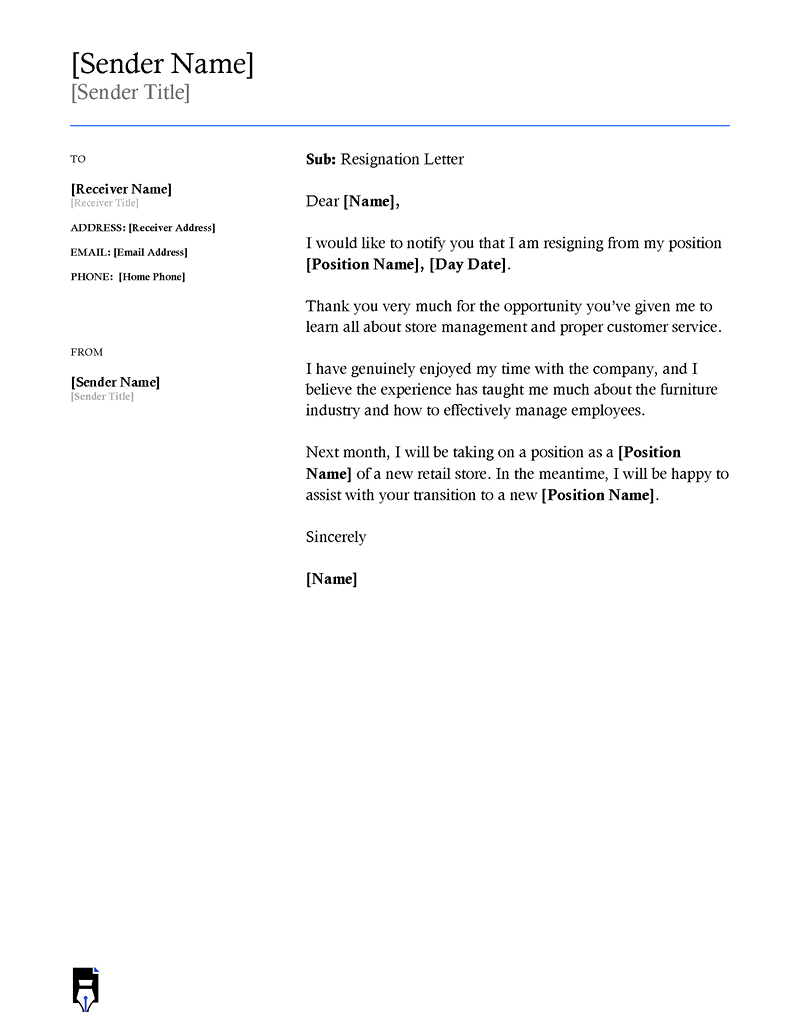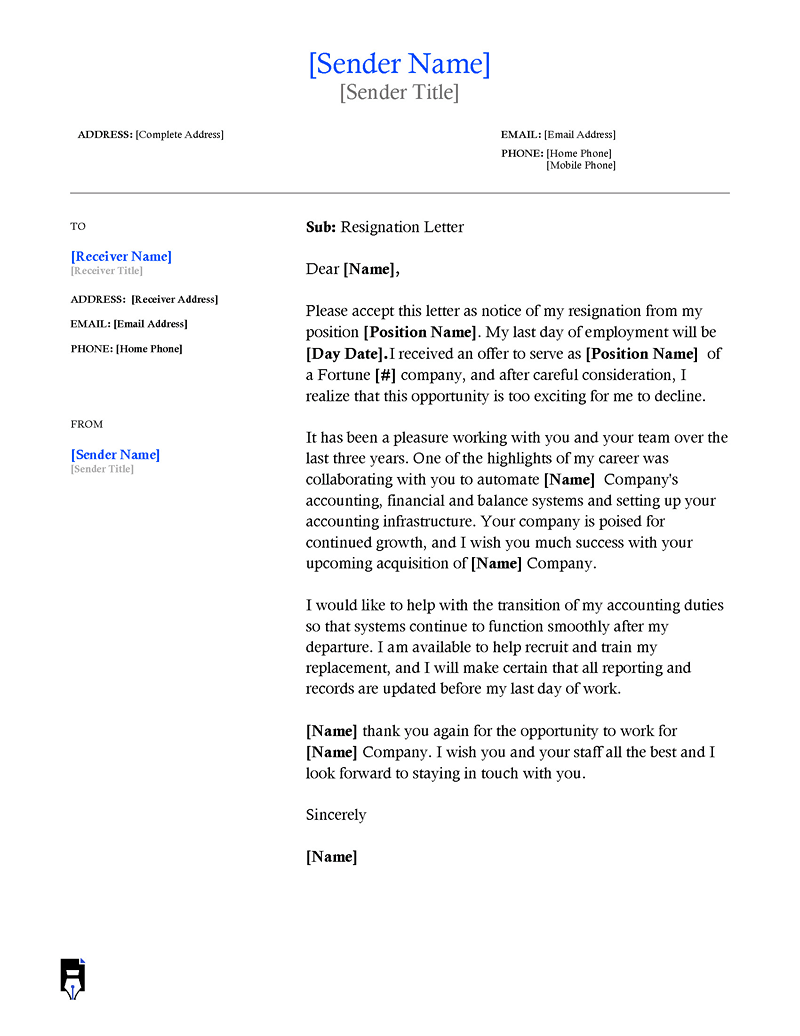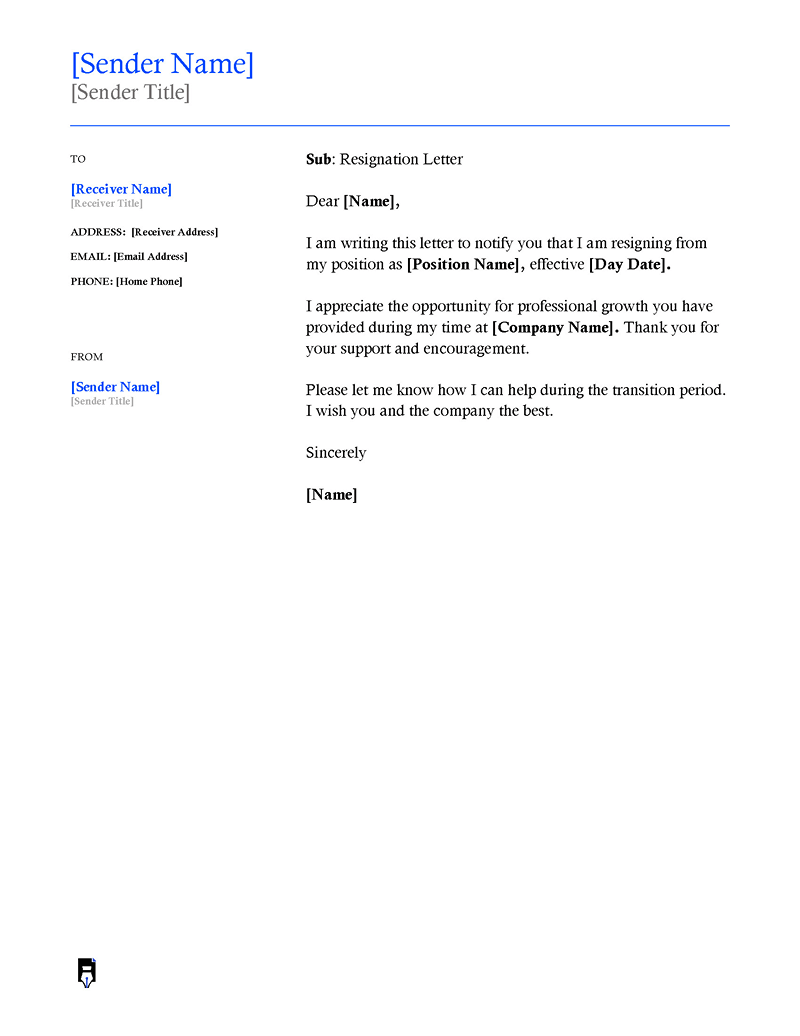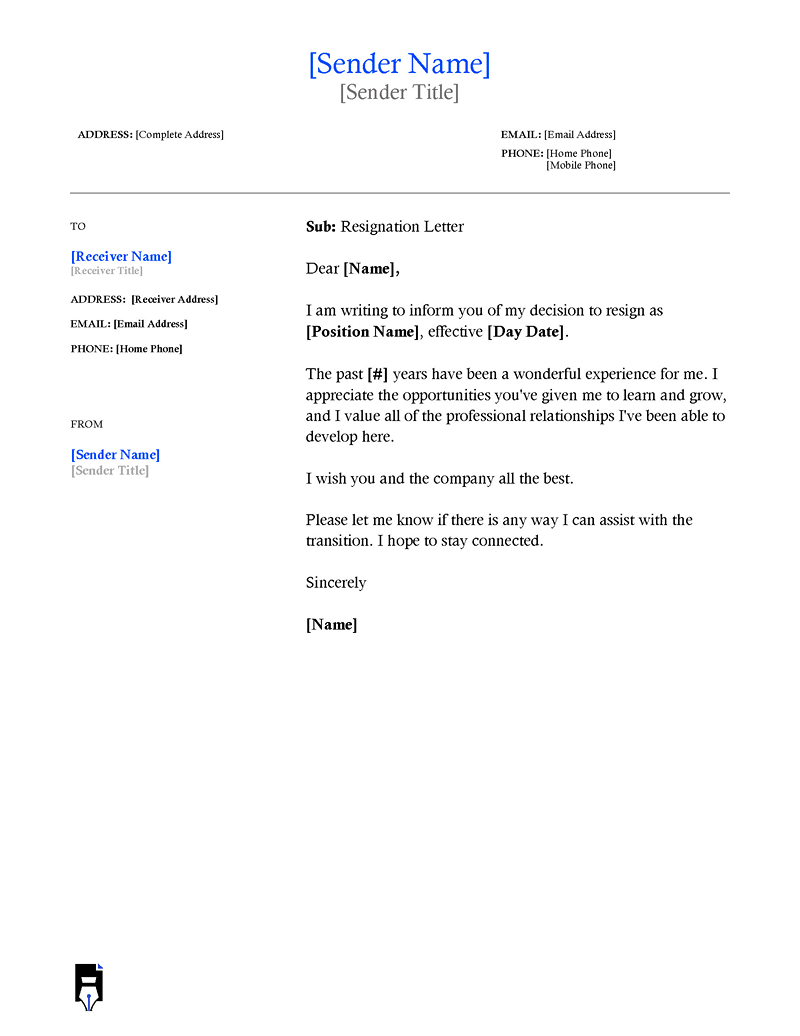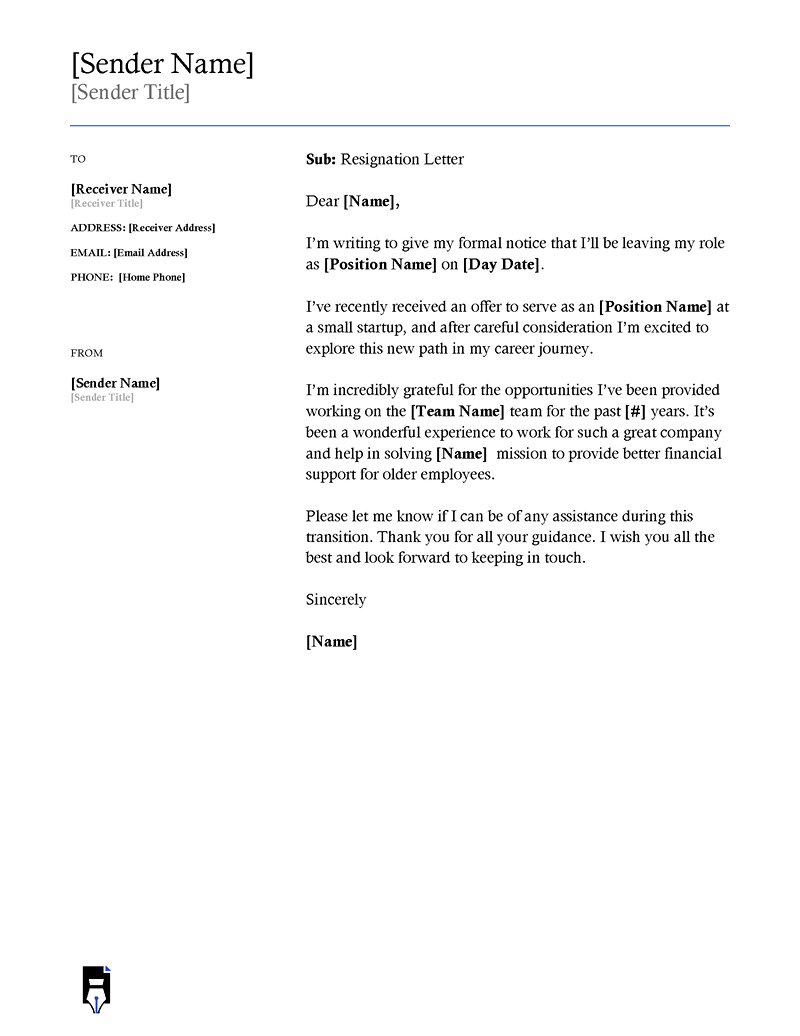A resignation letter is a formal announcement that you are leaving your job. It formally notifies your employer of your intentions to end your current employment and mentions your last working day as well. Additionally, it is a means of informing your employer that they must find a replacement for you. Therefore, you should not quit your job without formally announcing your intention to leave.
You can deliver a formal letter in person or send it via email to the employer to inform them of your resignation. It must be professionally formatted and written in a formal and polite tone. This will lay a proper foundation for seamlessly transitioning into your future career endeavors.
Irrespective of the reasons behind the resignation, it is standard protocol to present a letter to the current employer once you are confident of your intention to leave the job. A resignation letter is essential because it enables you to leave your current job on good terms and maintain a healthy relationship with your current employer for any potential future cooperation.
Some companies do not specify the need for a formal letter for their employees to announce their resignation in their company policy or employment contract. However, if you do submit one, it will present you as a professional employee and will also provide an official record of when the employee has ended their employment.
Resignation Letter Templates
Given below are resignation letter templates that you can download for free:
This article will cover the following aspects of announcing one’s intention to leave the current job:
- When and why to give a letter to your employer to announce your resignation
- How to write one
- Tips for Writing Professional Letters
- Common mistakes to avoid and
- Key takeaways
When and Why to Give a Letter to Your Employer to Announce Your Resignation
The appropriate time for an employee to formally announce their resignation to the current employer is two weeks before the last working day. Although two weeks’ notice is the customary period, it may be given later if there are exceptional circumstances, such as a family emergency or other life events that necessitate an immediate move. On the other hand, at-will employees are not legally required to give any notice.
To initiate the process, the employee may inform their employer in person that they are leaving their job. Still, they should write a letter. However, sending the resignation via email will suffice if it is a remote job.
An employee may need to tender a resignation letter to their employer for several reasons, including a career change to accept a new position at another company, the need for further education, relocation to another city for personal reasons, or dissatisfaction with the current remuneration. If you have an employment contract, you will want to examine it thoroughly to ensure that you comply with its terms and conditions for leaving the job.
How to Write a Resignation Letter
To write a professional letter, there are essential steps to follow and details that the employee must include. For a more personal approach, you may first want to inform the manager in person, either via mail or video chat, followed by submitting a professionally written letter to the company directly.
The following are the components of professional correspondence:
The header
A formal letter should include the header, the date the letter was written, and your personal contact information at the top of the page (this is not necessary for emails). Begin your letter with a salutation (such as “Dear”) while also addressing the reader by their name (such as “Dear Sheena”).
Example:
Mary June
24 Offcut Road | Greytown, MA 77777 | Phone: 555-555-5555 | [email protected]
October 26, 2022
Ms. Sheena Graham
Human Resources Manager
F&K Partners
543 Key St.
Greytown, MA 77777
Dear Sheena,
Introduction
The introduction section establishes the letter’s aim and objective. This is where the employee states the purpose of writing the letter and the date the resignation becomes effective, which is usually two weeks before the last working day.
Example:
Dear Ms. Sheena,
I hereby formally inform you of my intention to resign from my position as Quality Control Officer with F&K Partners. My last working day will be October 11, 2022.
Body
The body of the letter should explain the reason for your resignation, express gratitude and appreciation for the experience, and make a genuine offer to assist with the transition process during the last days of your employment. Such assistance can include helping with the assessment of new candidates.
You will want to leave your current job on good terms because you may need to contact your previous employer for references in the future.
Example:
The time has come for me to move forward in my career, as I have accepted a position with another company. My sincerest gratitude for the opportunity to learn from the best at F&K Partners. I hope you accept this letter as my formal resignation. I am available for any help with the transition process and would be glad to offer any assistance.
Conclusion
A brief parting statement, a final thank you, and the employee’s signature should be included in the conclusion. Including a brief statement about maintaining contact in the future is professional and ends the letter on a positive note.
Example:
While I am moving on to a new organization, I will forever cherish working with you and the entire team. Thank you again for the opportunity to learn. I wish you and the entire team at F&K Partners all the best.
I look forward to staying in touch.
Sincerely,
Mary June
Writing Professional Letters to Notify Leaving the Job: Some Advice
The following are helpful tips for writing a professional letter to your employer when you leave your job:
Format the letter appropriately
The resignation letter should be concise and should not be more than one page. Traditional fonts such as Arial, Calibri, or Times New Roman are advised. Use 10 to 12-point sizes, as they are the standard font sizes. Lastly, use single spacing with a space between paragraphs, one-inch margins, and align text to the left.
Deliver your letter in person
It is courteous and professional to personally submit the letter to the manager. Afterward, the employee may send an email with a direct and concise subject line.
Example:
Resignation — Mary June
Consider networking opportunities
When notifying your employer about your decision to leave, it is wise to do so in a way that will motivate them to maintain a professional relationship even after you have left the job.
Example:
It would be a pleasure to keep in touch and share some UI/UX insights from our career adventure. Please contact me anytime you need professional brainstorming or collaboration. You can reach me at [email protected].
Common Mistakes to Avoid
To successfully write a professional resignation letter, there are some common mistakes one must avoid, which include:
- Do not mention anything negative about your experience at the workplace as a reason for leaving the job.
- Do not complain or criticize the role, company, manager, or co-workers.
- If you are looking forward to a counteroffer, do not mention that you are getting higher pay in the new job; mention your expectation in person instead.
- Do not express enthusiasm about leaving.
- Stay authentic. Many people can see through the fakeness.
- Be respectful and professional.
Key Takeaways
The following are the key takeaways from the article:
- A resignation letter is a formal letter that employees use to notify the employer of their intention to end their employment.
- A standard letter must include a gratitude statement, the last day of employment, the employee’s contact information, and the current position at work.
- It is polite to submit the letter to the employer in person, and then it can also be emailed.
- It is important to give the employer two weeks’ notice.
- It is not necessary to mention the specifics of your new job. Avoid unnecessary details.
